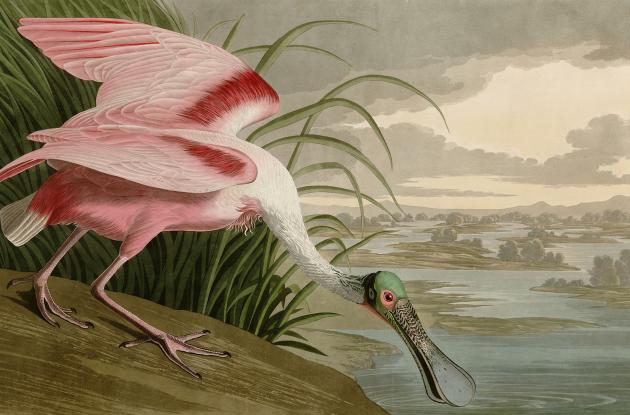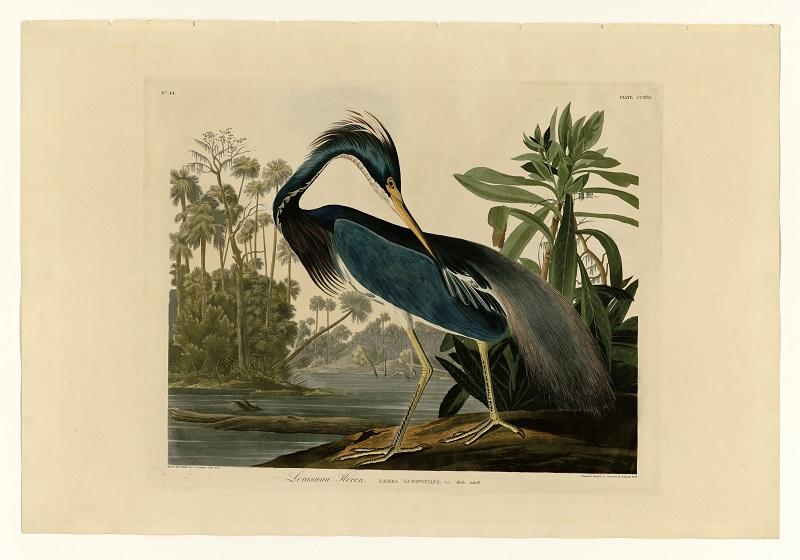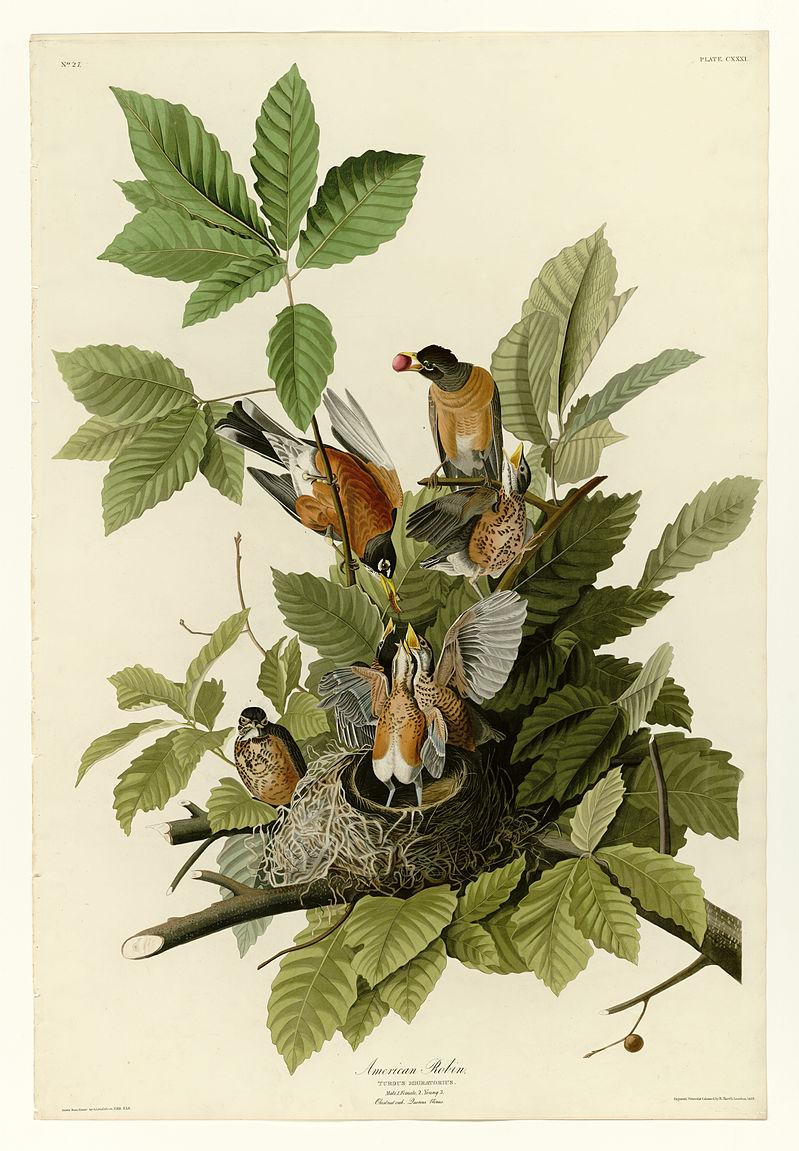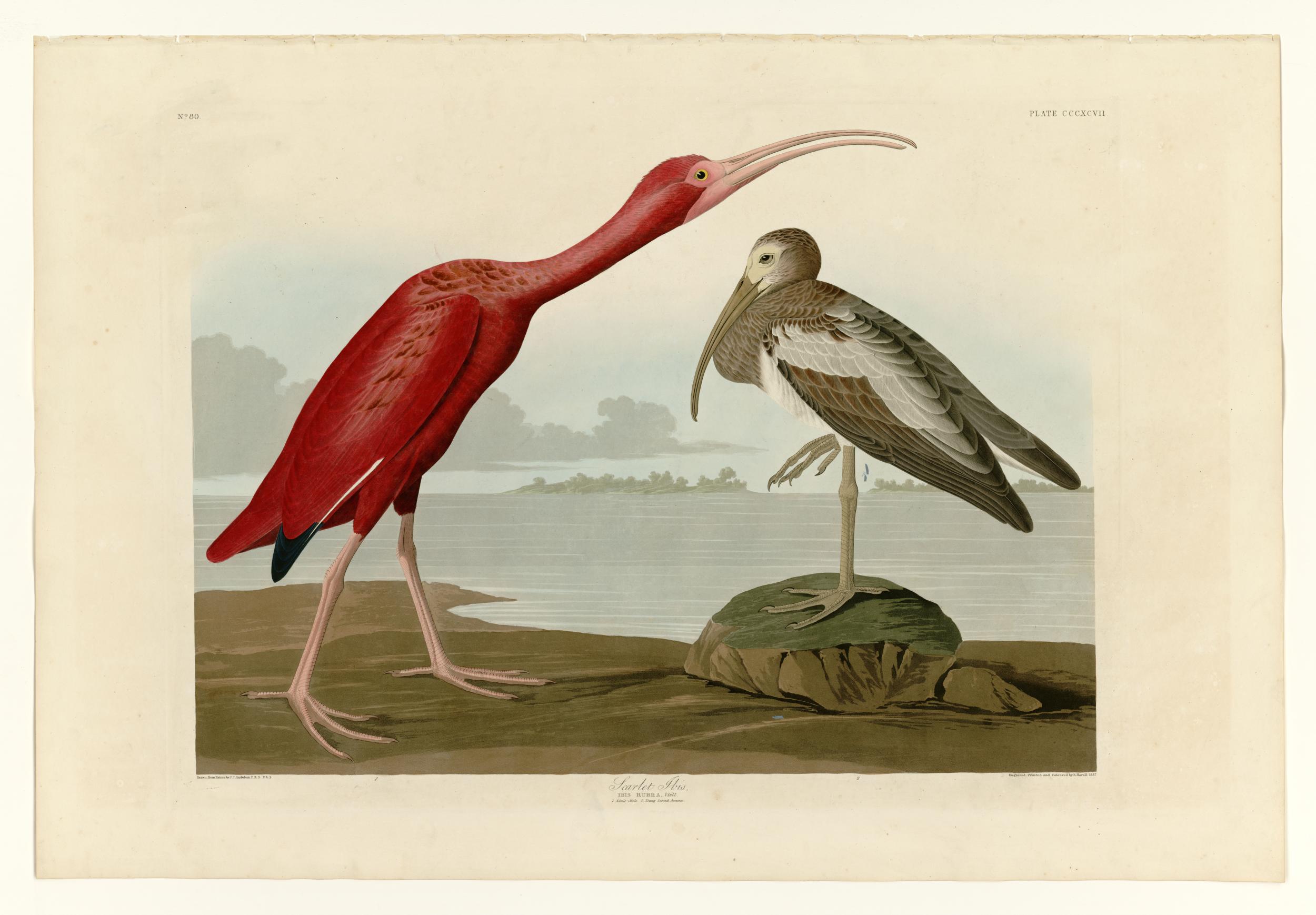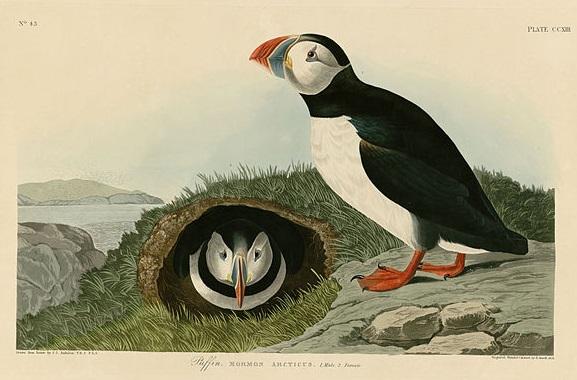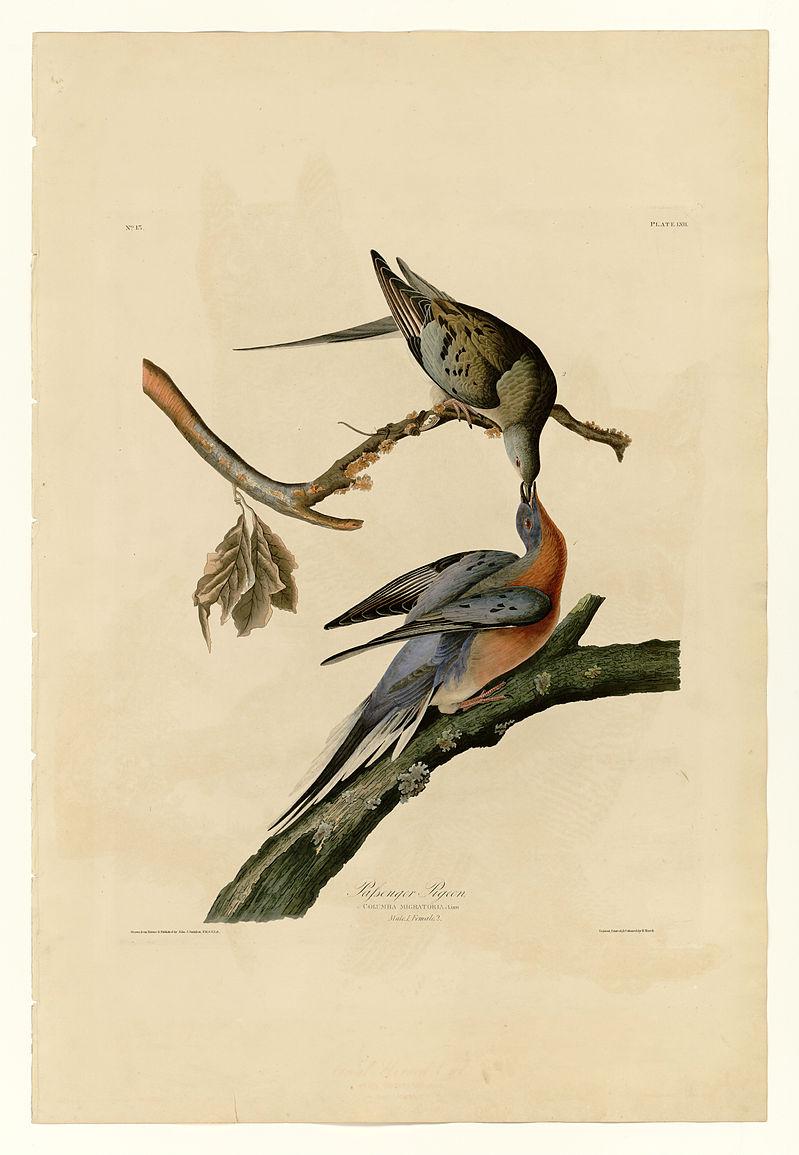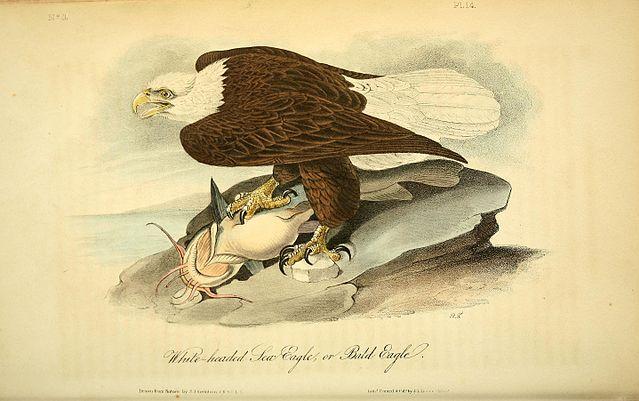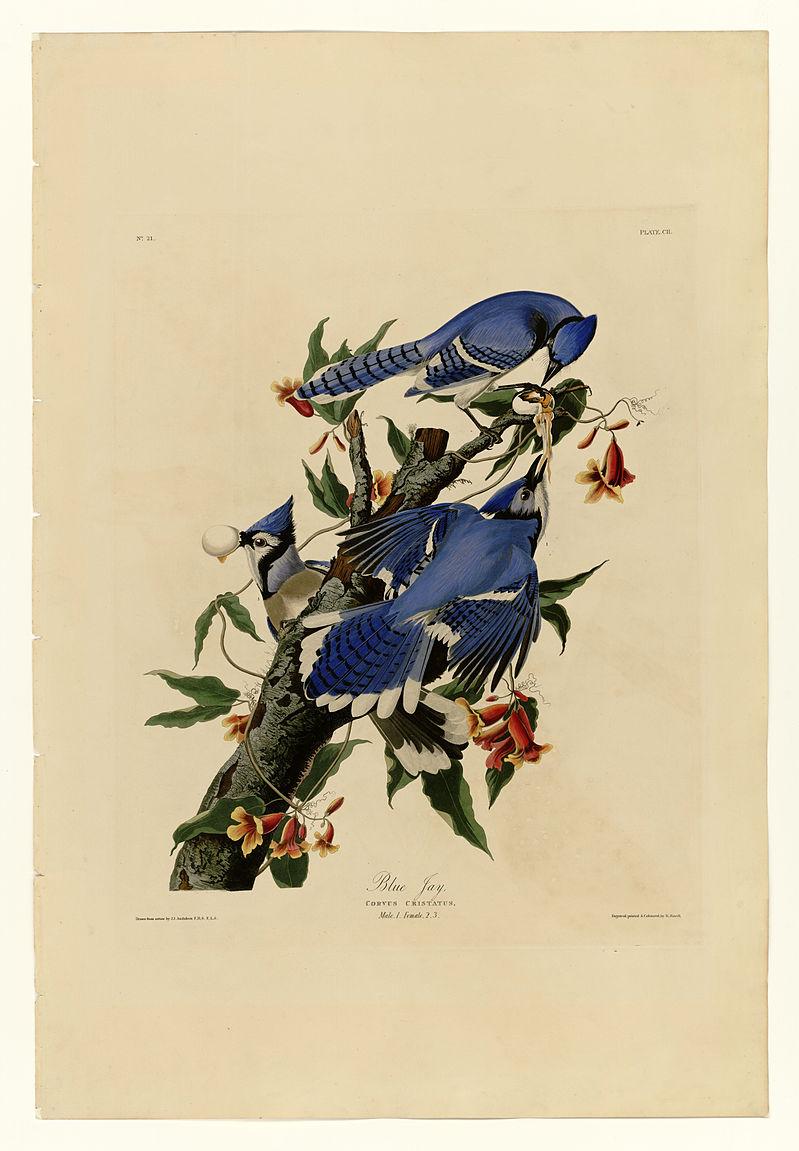Audubon's great life's work
James Audubon's life's work Birds of America, with its 435 hand-painted pictures in the birds' natural size, is one of the great treasures of our collections.
The work Birds of America contains 435 hand-painted pictures of birds from America. The many different species of birds are drawn in their natural surroundings, sometimes sitting on a branch, with an animal in their beak, or flying with the wind under their wings. Where the work particularly differs from similar works and makes itself completely its own, is the size of it. John James Audubon, who is behind the work, drew the birds in their natural sizes, which makes the work one of the largest of its kind.
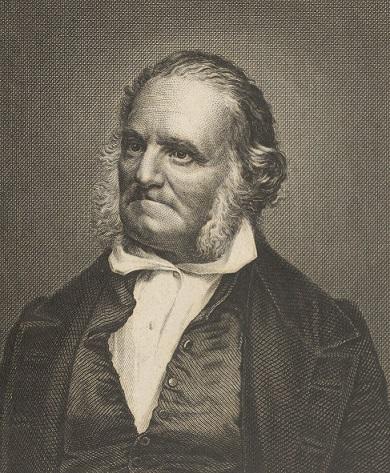
Photo: Ukendt ophav
Audubon's upbringing
John James Audubon (1785-1851) was the son of a French captain and plantation owner, Jean Audubon, and nature was his great interest from childhood. Instead of going to school, regardless of the season, Audubon would spend his days outside in fields and forests, gathering bird's nests, edible plants, bird's eggs and similar things in his little basket. He began to draw the objects he found, and this interest would prove to follow him throughout his life.
In 1806, at the age of 21, Audubon was sent to his father's estate, Mill Grove, near Philadelphia in the state of Pennsylvania, USA. Officially to learn English, unofficially to avoid French conscription. Here Audubon continued his free life, and he continued to take an interest in - and draw - nature. It was birds in particular that caught Audubon's interest.
The hunt for the method
The traditional method used at this time to draw birds was by drawing stuffed birds. But that method, Audubon believed, resulted in lifeless images, and so he looked for his own way of doing things. At first he tried to draw the birds while observing them in the wild, but because the birds were moving, he only managed to draw sketches lacking in detail.
To get close enough to the birds to draw every detail, he had to shoot them. This was a necessity as the photographic apparatus did not yet exist. He then experimented with different methods of mounting the bird so that he could draw it as lifelike as possible. This involved, among other things, hanging the bird up on strings like a marionette. Eventually, Audubon learned that by fitting the dead bird with metal wire, he could mount the bird in exactly the position he wanted and knew from nature. The method only worked in the hands of someone who knew the birds' movement patterns – and Audubon did
A great printing job
In the early 1820s, Audubon decided that he wanted to publish his bird drawings in the United States. But it would prove to be difficult. One thing was that at this time there were many competing works, but another thing was that Audubon drew the birds in their natural size, and the printing work would therefore be a great challenge. He was unable to find anyone who would print his drawings in the United States, so he packed his suitcase and returned to Europe. Specifically, Edinburgh, where he found the engraver William Home Lizars, who agreed to throw himself into the big project. He printed the first ten plates, but then ran into major problems, particularly with his colourists, after which the work was moved to London.
The work was published by subscription, with five drawings in each volume at a price of two guineas. At that time, it was extremely normal to publish works of art on subscription. Partly because it was a condition for being able to print the work at all, and partly because it was a condition for being able to sell copies, as the customer only had to pay small amounts at a time. Audubon even managed to get George IV, King of Great Britain to take out a subscription.
As there were more and more bird species, the number of volumes also increased. The end result was 87 volumes with a total of 435 plates. In addition, Audubon published five volumes of accompanying texts for the illustrations.
Watch the video below where Torsten Schlichtkrull talks about the work, and get a sense of the sheer size of the book.
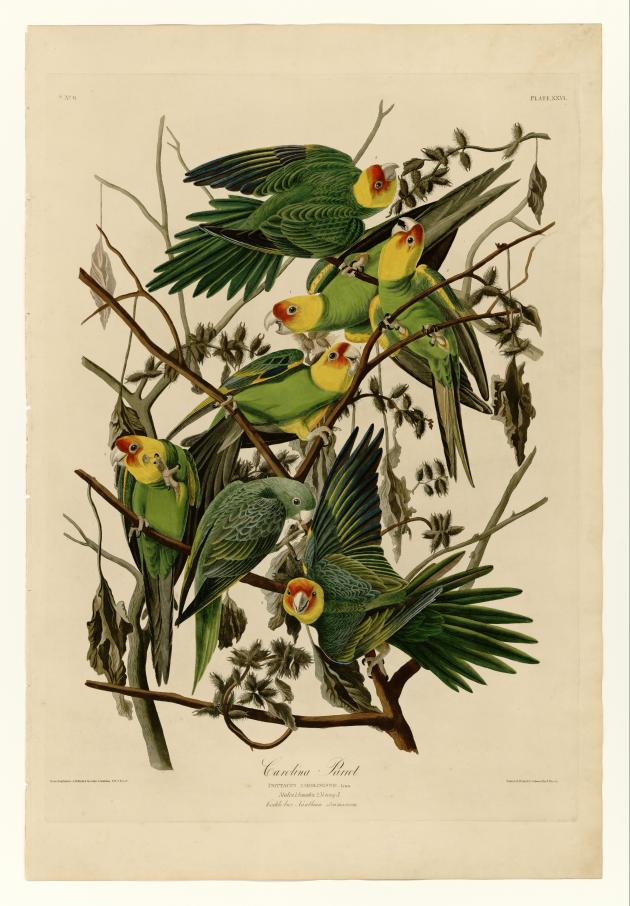
Photo: John James Audubon
An important scientific aid
Printed illustrated works of natural history have been published almost ever since the art of printing was invented, but in spite of this, no work of such exceptional quality has been seen either before or since. Works like this were important to libraries and researchers all over the world because back then it was impossible to travel across continents in the same way as you can today. Therefore, stuffed animals and illustrations of them were considered important scientific aids, and well into the 20th century Birds of America, the images as well as the texts, have been valuable to researchers. Although today the work is no longer of great natural scientific value, it is truly an impressive and unique work in both size and artistic execution and of great literary and historical value.
It has been difficult to put a precise number on how many complete copies of Birds of America have been printed, but it is believed to be between 200 and 225. Unfortunately, not all of them exist today. Some copies have been burned or have suffered water damage, some have been butchered and the plates sold individually, and others have been subject to theft.
Today, it is known that 119 complete copies have been preserved, scattered all over the world. One of those copies is in our collections in Copenhagen, the only one in Scandinavia, and it has been here since 1858.
Go exploring in Royal Danish Library's exhibition TREASURES
Birds of America can be seen in Royal Danish Library's permanent exhibition TREASURES. Here you can also discover the collections' other gems, such as Søren Kierkegaard's letter to his fiancée, Karen Blixen's own manuscript or Hans Christian Andersen's diary.
See more illustrations
You can see more illustrations from Birds of America here
